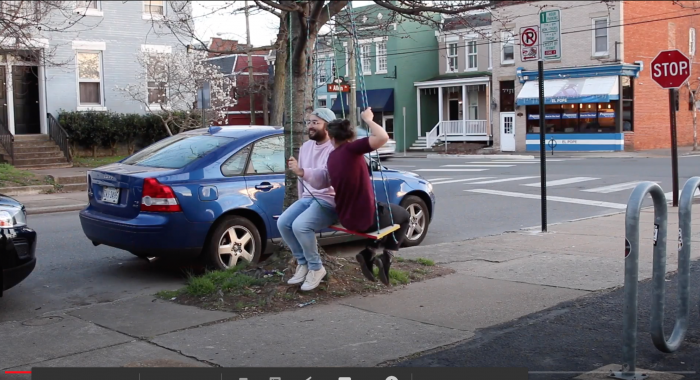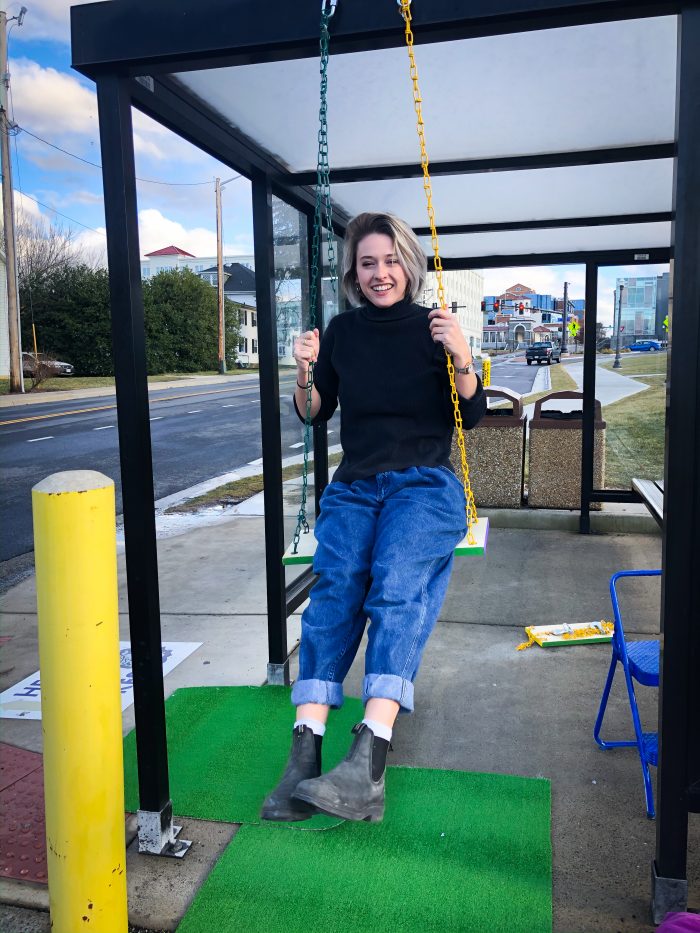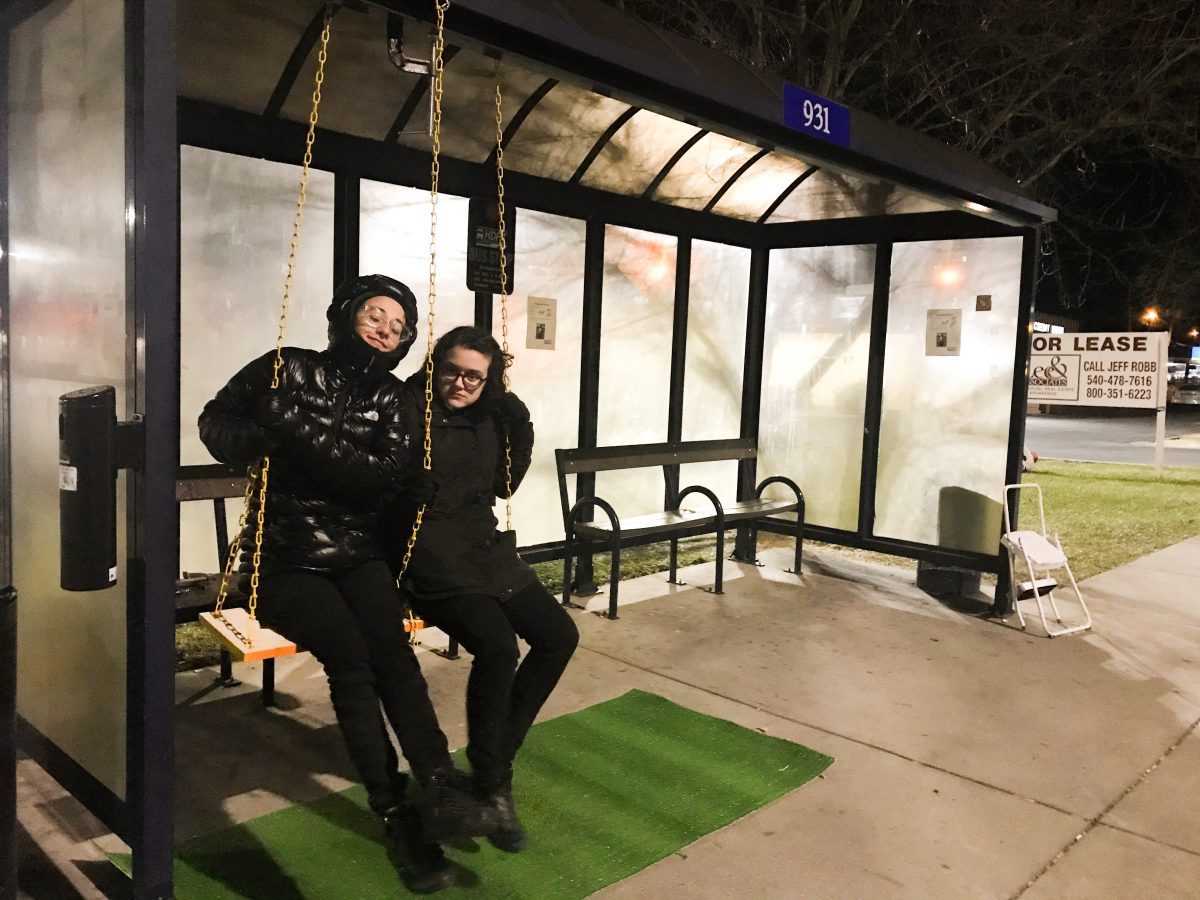Peace through Collective Play
Highlighting the Gestural in Undermining Social Striation in the American South
Importantly, Harrisonburg was granted the status of a “welcoming city” to immigrants in 2016 on the basis of the provision of excellent social support services by local NGOs, but a legal vote to grant migrants explicit protection from arbitrary enforcement of legal status checks in 2017 was not passed by the local government. This means that while exceptional city-wide support by mostly private institutions is offered to migrants, explicit legal protection by the city is not. This continues to be representative of the meta-narrative of racial politics in the American South.
The city of Harrisonburg, and its surrounding county of Rockingham, Virginia, is a prime example of what is referred to as a community of “striated” or “non-intersective” peace (Denton and Gibbons, 2013). (*2) This term is one generated to describe suburban or rural environments that remain pseudo-peaceful, or non-violent, in theory, but this sense of social stability is fully reliant on a habit of non-interaction between unlike communities of differing social experiences. This striated peace is enforced and maintained by a lack of shared, social, public spaces for those of differing demographics. Compared to more urban environments, the existing green, social space is largely privatized, homogenizing the social experience of its users. With this in mind, I became interested in undermining the lack of public green spaces that are universally accessible in order to invite a new type of equalizing social interaction from self-selecting participants through a practice that subverts social structure on its own: shared play.
(*2) This term is one generated to describe suburban or rural environments that remain pseudo-peaceful, or non-violent, in theory, but this sense of social stability is fully reliant on a habit of non-interaction between unlike communities of differing social experiences. This striated peace is enforced and maintained by a lack of shared, social, public spaces for those of differing demographics. Compared to more urban environments, the existing green, social space is largely privatized, homogenizing the social experience of its users. With this in mind, I became interested in undermining the lack of public green spaces that are universally accessible in order to invite a new type of equalizing social interaction from self-selecting participants through a practice that subverts social structure on its own: shared play.
My project design is a direct response to the issue of this “non-intersective,” or striated, self-segregating, version of peace (Lewis, 2014.). (*5) In particular, I intended to investigate the way that people interact with one another by subverting and upholding what I will hereinafter refer to as social borders, or behavioral patterns maintained by those of homogeneous or similar social groups within a given context. In order to evaluate this, I informally mapped, through a combination of observation and quantitative research, the overarching social barrier zones in Harrisonburg and Rockingham county.
(*5) In particular, I intended to investigate the way that people interact with one another by subverting and upholding what I will hereinafter refer to as social borders, or behavioral patterns maintained by those of homogeneous or similar social groups within a given context. In order to evaluate this, I informally mapped, through a combination of observation and quantitative research, the overarching social barrier zones in Harrisonburg and Rockingham county.
I evaluated:
- Living and social spaces (apartments, community centers, parks)
- Spaces of need-meeting
- Spaces of division (transportation)
In order to strategically evaluate the city in all three of these overarching terms, I used a combination of local data, including local census and community demographic data, school census of languages spoken, mapping by dérive/observation, citing walking as an observational tool.
By doing a soft review of available of social geographic data and school census records, and through observation by interaction in various neighborhoods in the community, I identified several groups for whom interaction seemed to be lacking, including:
- University students
- English-speaking locals (city)
- English-speaking locals (farmland and surrounding rural areas)
- Non-English-speaking residents (Spanish-speaking, of varying legal status)
- Additional homogenous cultural subgroups (largely made up of those seeking asylum status)
- The Mennonite community
- Individuals experiencing homelessness (those who contribute to the social structure of the homeless subcommunity locally.)
While individuals may belong to more than one of these social groups, in general, these groups tend to self-separate. I became interested in identifying and subverting social patterns in existing shared spaces that foster limited social interactions, referred to as non-intersective spaces.
Importantly, I wanted to remove myself, as the outsider, as much as possible from the exchange itself in order to allow for equal-level participation. To mitigate the homogeneity of self-selecting participants, I became interested in finding moments of pause in existing social patterns, noting that transportation type and access are major indicators of socioeconomic status in rural areas. I found significant moments of both pause and shared, non-interactive space in waiting for the limited available public transportation, especially in bus stops that share a proximity to grocery stores, sidewalks, and importantly, parking lots.
Social Modeling for Suburban and Rural Spaces
In my initial exploration, I examined iterative making practices and patterns of co-making that are inviting. After some observation of community inclusion in my own practice of community making and arts education, it became apparent that the presence of the artist perpetuated the structure of giver (of skill, of supplies, of direction) and receiver in a way that undermined the goal of setting a circumstance of equalized exchange. The presence of the art-object-as-goal establishes a hierarchy among participants, where, if the artist is present, the artist, whether intentionally or not, remains the maker and maintainer of the circumstance (Purves 2005). (*7) This sets the artist up for circumstantial grooming in a way that felt counterproductive to democratic exchange between groups that evade intersection. I decided to focus on the existing economy of shared non-social spaces (Michelson, 2016).
(*7) This sets the artist up for circumstantial grooming in a way that felt counterproductive to democratic exchange between groups that evade intersection. I decided to focus on the existing economy of shared non-social spaces (Michelson, 2016). (*6)
(*6)
As a result, I became interested in the social structure of the playground, which acts as a reversal agent for subverting the social structure of public space. This can largely be attributed to play as a social experimentation tool and empathy-building practice space for young children. Notably, this restructuring extends to spectators (generally, caretakers) who become involved in play as peripheral participants, and interact with each other as well as those involved in the play act, undermining social borders. Because play can be independent, it became important to design or create interventions that require collaborative play-type interactions. As a result, I decided to use swings, which work with the desire to sit or rest in spaces of waiting. Because swings are not inherently collaborative in nature, I redesigned the swing so that it required – at least situationally – two people working together to function as a play item.

Fig. B: Participants negotiating directions on double swing for prototype.
As a result, I created two situations:
The first was a double swing (figure B), which works best with two people swinging together, either back to front, or facing in the same direction. To clarify the intention of the object, I chose to include diagrams which described, with varying intention, the uses for the swings.
I elected to have these signs mimic municipal signage, in terms of instructional pictograms, to subvert the current social rhetoric on the politics of language use in the U.S, as indicated by school registration data, because over 42 languages are spoken within the municipality of Harrisonburg (web. Harrisonburg City Schools.) (*8) according to the census of public school families. Therefore, I felt that the most inclusive option would be to rely on image-based signifiers.
(*8) according to the census of public school families. Therefore, I felt that the most inclusive option would be to rely on image-based signifiers.

Fig. C: Setting up single swings in bus shelter for interactive performance.
Sarah Phillips ( 2020): Peace through Collective Play. Highlighting the Gestural in Undermining Social Striation in the American South. In: p/art/icipate – Kultur aktiv gestalten # 11 , https://www.p-art-icipate.net/peace-through-collective-play/



 Artikel drucken
Artikel drucken